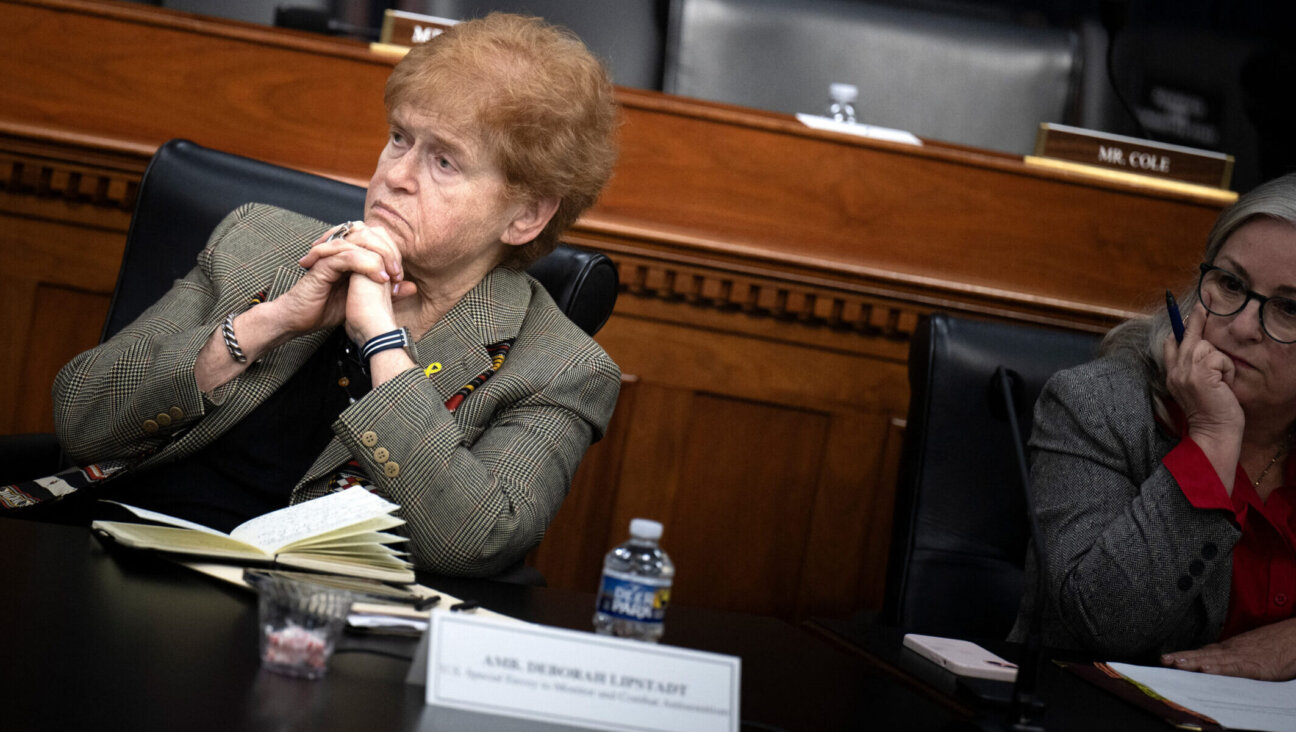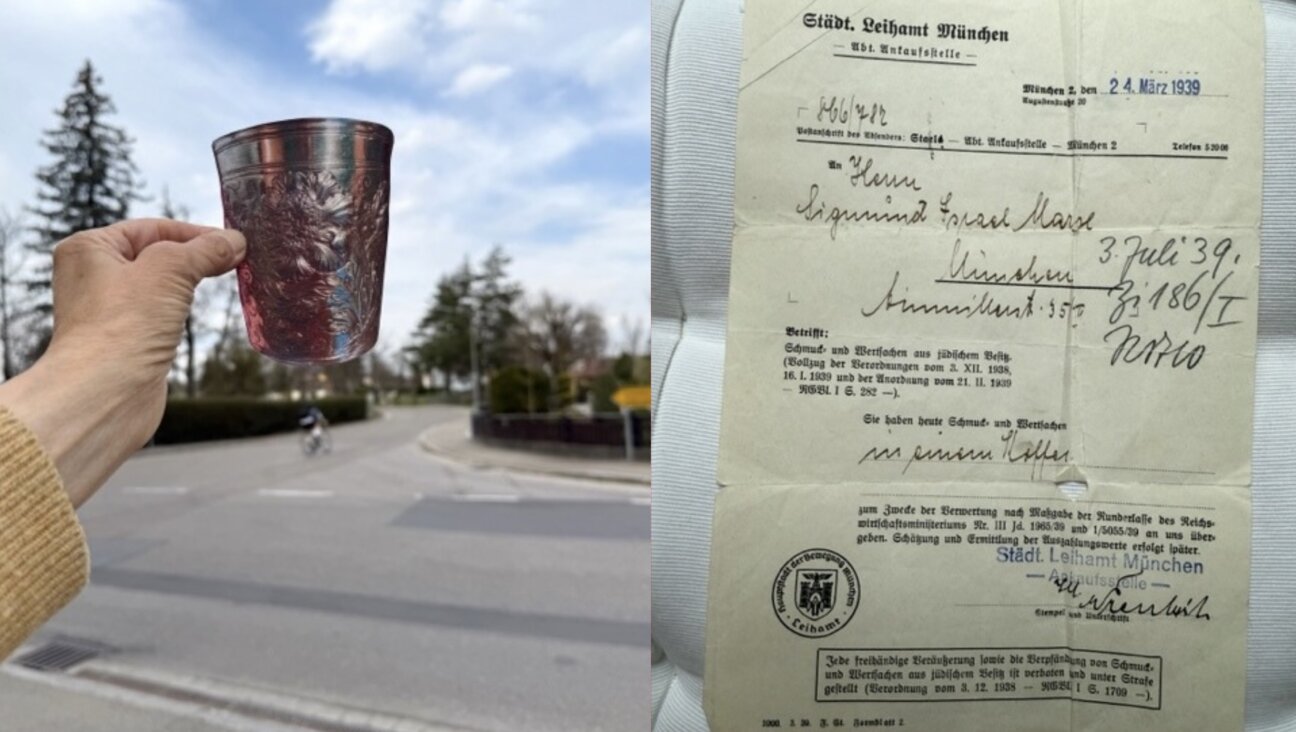Dual-Degree Program Targets Agency Leaders
In an effort to better prepare Jewish communal organizations’ future leaders, a new graduate-school program in New York will combine Jewish studies with management training.
The Jewish Professional Leadership Program — a dual-degree program that is run under the partnership of the Jewish Theological Seminary and Columbia University — will offer students the opportunity to earn master’s degrees in both Jewish studies at JTS and public administration at Columbia’s School of International and Public Affairs, or SIPA, in two or three years. The mission of the program — set to launch in 2009 — is to provide prospective leaders of Jewish communal organizations with both the management skills and the Jewish learning they need to do their jobs, allowing them to save a year or two of schooling in the process.
“This is a way of squeezing more into less time,” said Maud Kozodoy, an assistant dean at JTS who is overseeing the program.
Jewish organizational leaders have traditionally come from backgrounds in social work and then moved into more administrative positions. In fact, JTS and Columbia have already jointly offered a dual master’s degree in Jewish studies and social work for several years. But as Jewish organizations, and nongovernmental organizations in general, have changed over the past few decades, they have begun to look for staffers with different training and skills.
“For a long time, we were training people primarily in social work and related fields,” said Gary Tobin, president of the Institute for Jewish & Community Research, a think tank that studies Jewish organizational issues. “A lot of NGO work now is about management and fundraising and organization building, and requires different sets of skills.”
As a result, students at JTS began to request the opportunity to combine their Jewish-studies degrees with a master’s in public administration. Some even went out and got both degrees separately. Administrators allowed some students to study at both schools, through ad-hoc arrangements. The steady stream of students making such requests convinced the schools that there was interest in such a program, and three or four years ago the two schools decided to set about linking the two programs officially — no small undertaking.
“It’s a bureaucratic nightmare to put a program like this together,” said Lisa Anderson, dean of SIPA.
Still, in the long run, the schools hope that the move will save time for administrators and students by permitting the latter to avoid taking redundant classes at the two schools. They must apply to JTS and Columbia separately, but once they are in, the two programs mesh. Ordinarily, SIPA requires participants to take both a core curriculum — which focuses on courses in policymaking, statistics, economics and budgets — and a concentration in a desired field. Through the joint program, enrolled students can now fulfill that concentration across the street at JTS, where they will study Jewish history, Israel, Jewish texts and contemporary issues in Jewish life.
They will also get hands-on experience: As part of SIPA’s program, students take workshops in which they serve as management consultants to actual client organizations. These workshops offer a chance for students to develop skills beyond book learning, and sometimes they can even lead to job offers from satisfied clients.
Administrators from both schools expect the dual-degree program to remain relatively small — possibly starting with 10 or fewer students when it launches.
Even so, a program that supplies skilled Jewish professionals would be welcome, given that Jewish organizations are facing a dearth of qualified professionals.
“We don’t have enough people, whether to be day school administrators or campaign directors,” Tobin said. He praised the new dual-degree program, but he warned that it raises the larger, more troubling question of how to keep trained professionals in a field where hours are grueling and where untrained lay leaders can be difficult to work with. According to some studies, half of new Jewish professionals leave the Jewish community within three years.
“What happens six months after these people, who are well-trained, take a good job someplace?” Tobin asked. “That’s a lot of good money down the drain for a joint program for somebody to get into the field, after a year or two be disillusioned and leave and go someplace else.”
That said, program organizers see the new program as an important way to raise the bar for the field of Jewish organizations.
“I’d like to think that the people running [Jewish social service agencies] are well-trained and professionally oriented,” said Anderson. “I think this is an ideal way of fostering that.”
The Forward is free to read, but it isn’t free to produce

I hope you appreciated this article. Before you go, I’d like to ask you to please support the Forward.
Now more than ever, American Jews need independent news they can trust, with reporting driven by truth, not ideology. We serve you, not any ideological agenda.
At a time when other newsrooms are closing or cutting back, the Forward has removed its paywall and invested additional resources to report on the ground from Israel and around the U.S. on the impact of the war, rising antisemitism and polarized discourse.
This is a great time to support independent Jewish journalism you rely on. Make a gift today!
— Rachel Fishman Feddersen, Publisher and CEO
Support our mission to tell the Jewish story fully and fairly.
Most Popular
- 1

Opinion The dangerous Nazi legend behind Trump’s ruthless grab for power
- 2

Opinion A Holocaust perpetrator was just celebrated on US soil. I think I know why no one objected.
- 3

Culture Did this Jewish literary titan have the right idea about Harry Potter and J.K. Rowling after all?
- 4

Opinion I first met Netanyahu in 1988. Here’s how he became the most destructive leader in Israel’s history.
In Case You Missed It
-

Opinion Gaza and Trump have left the Jewish community at war with itself — and me with a bad case of alienation
-

Fast Forward Trump administration restores student visas, but impact on pro-Palestinian protesters is unclear
-

Fast Forward Deborah Lipstadt says Trump’s campus antisemitism crackdown has ‘gone way too far’
-

Fast Forward 5 Jewish senators accuse Trump of using antisemitism as ‘guise’ to attack universities
-
Shop the Forward Store
100% of profits support our journalism
Republish This Story
Please read before republishing
We’re happy to make this story available to republish for free, unless it originated with JTA, Haaretz or another publication (as indicated on the article) and as long as you follow our guidelines.
You must comply with the following:
- Credit the Forward
- Retain our pixel
- Preserve our canonical link in Google search
- Add a noindex tag in Google search
See our full guidelines for more information, and this guide for detail about canonical URLs.
To republish, copy the HTML by clicking on the yellow button to the right; it includes our tracking pixel, all paragraph styles and hyperlinks, the author byline and credit to the Forward. It does not include images; to avoid copyright violations, you must add them manually, following our guidelines. Please email us at [email protected], subject line “republish,” with any questions or to let us know what stories you’re picking up.















